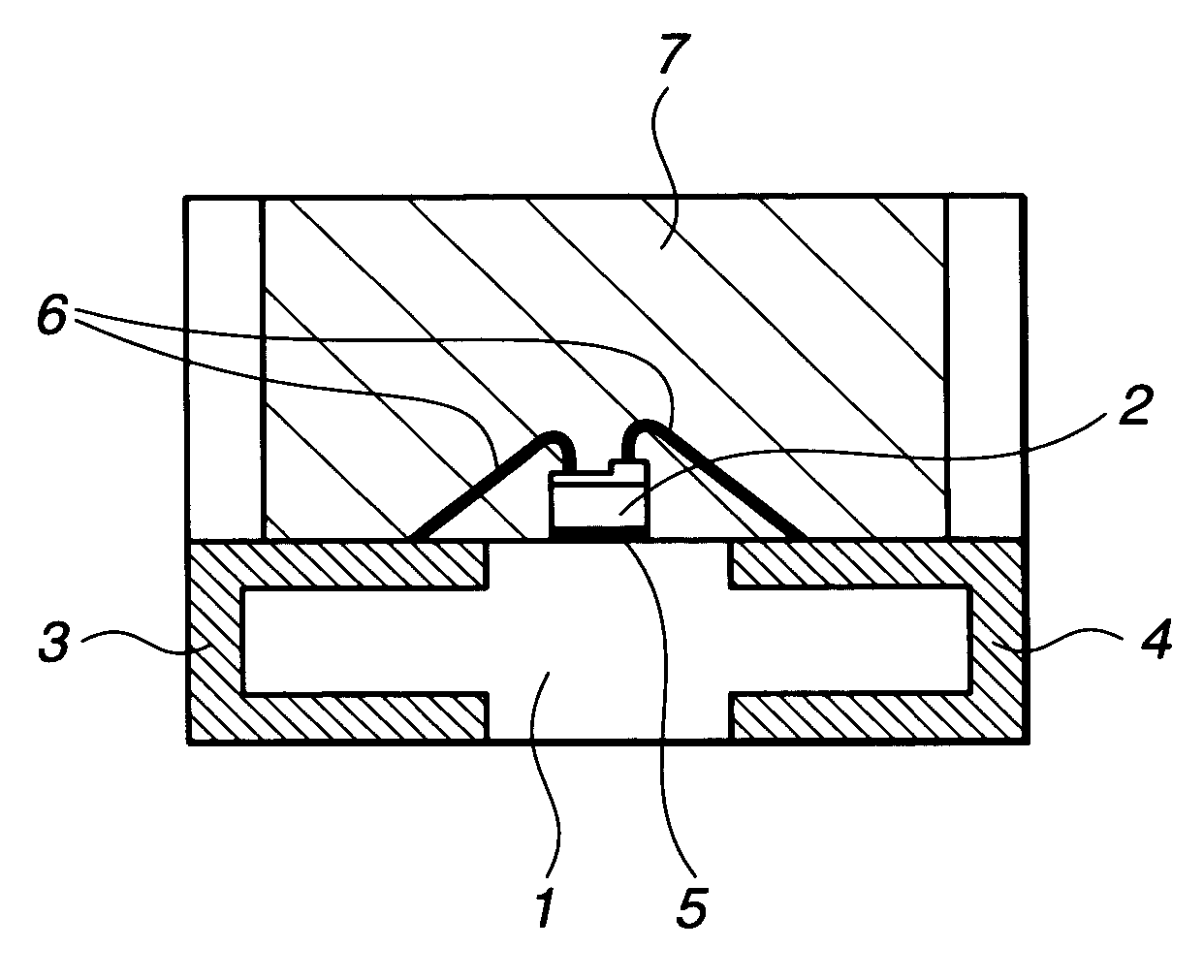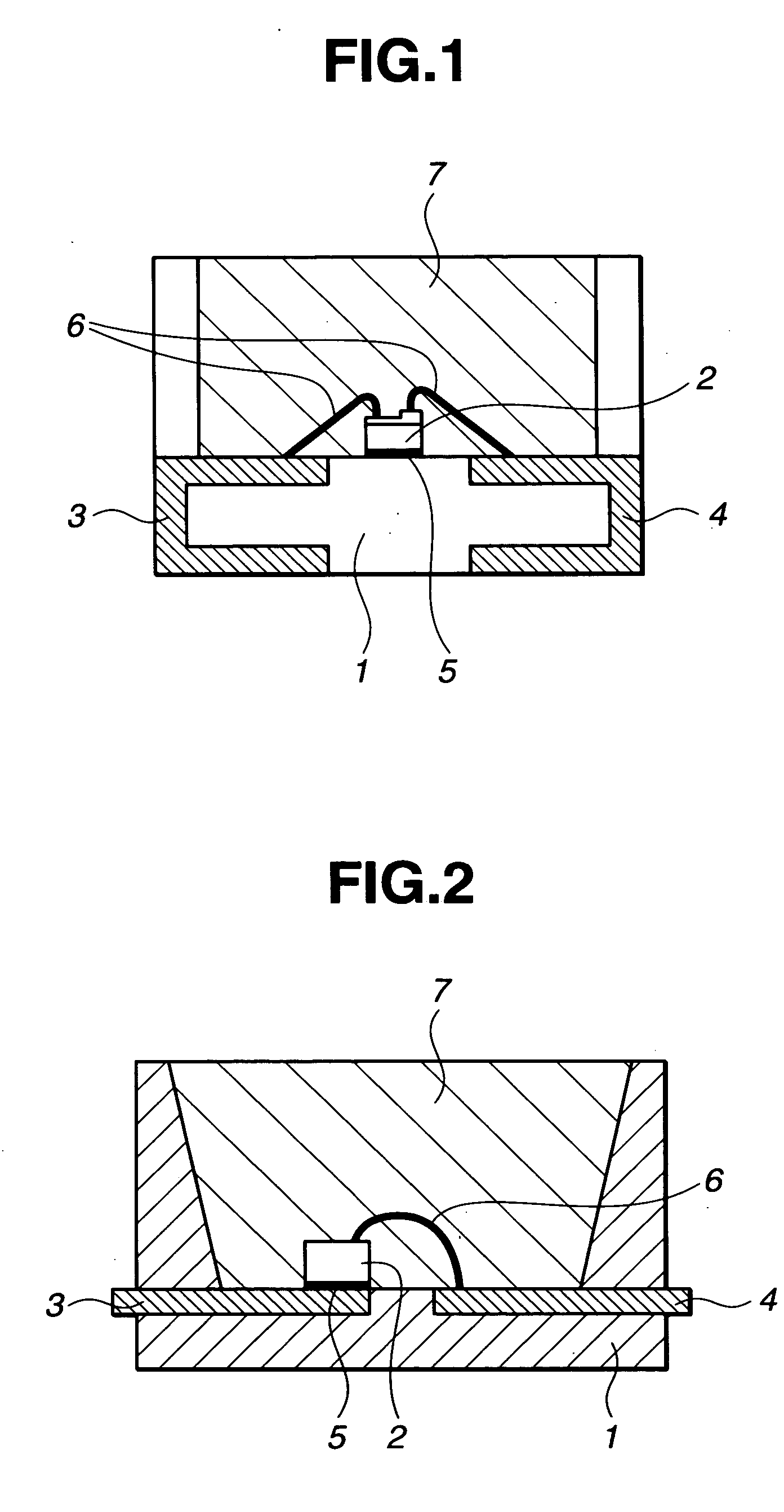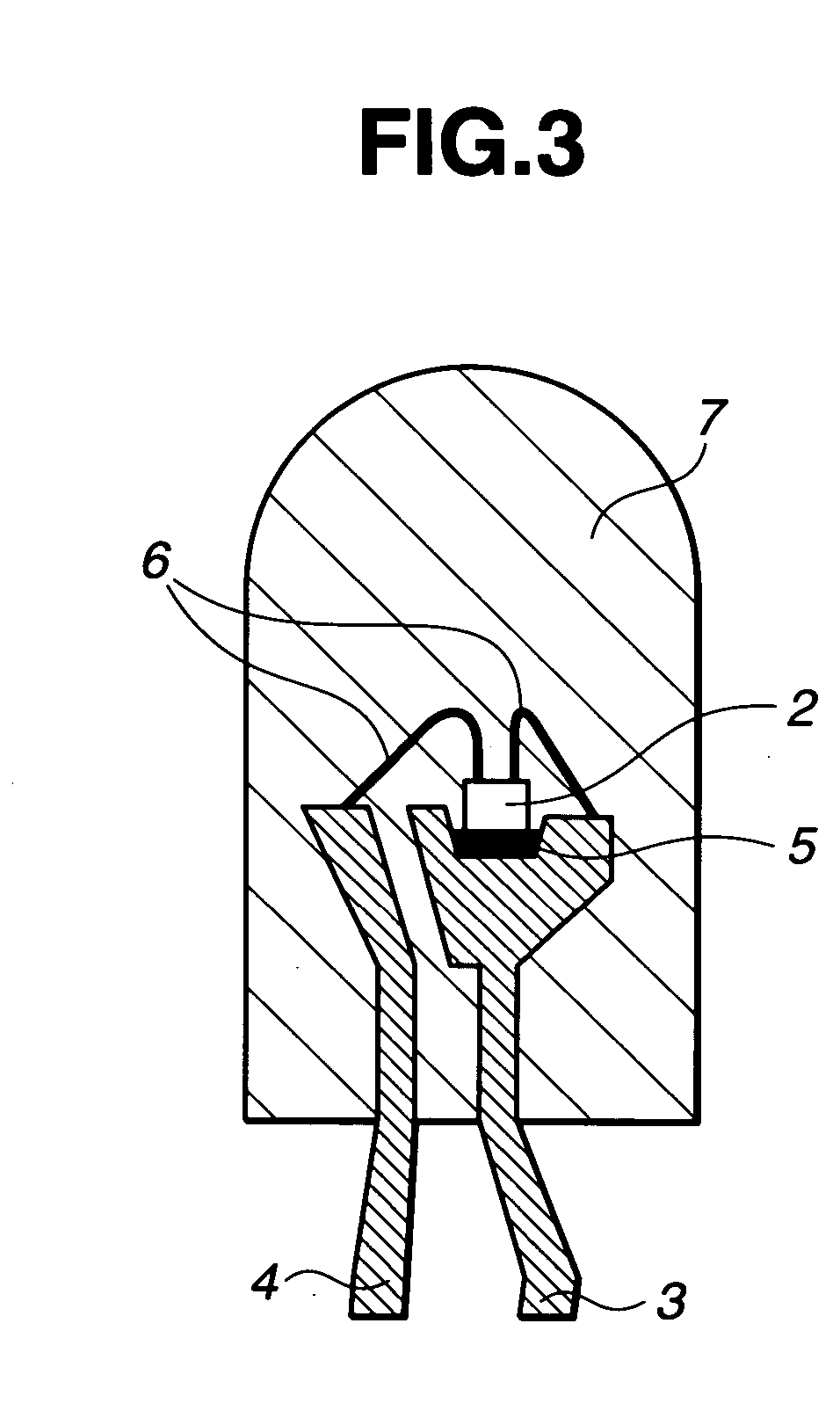LED devices and silicone resin composition therefor
a technology of silicon resin and diode, which is applied in the direction of transportation and packaging, layered products, basic electric elements, etc., can solve the problems of increasing the cracking of encapsulants by heat generation, fewer silicone resins are actually used, and yellowing of epoxy resin encapsulants
- Summary
- Abstract
- Description
- Claims
- Application Information
AI Technical Summary
Problems solved by technology
Method used
Image
Examples
example 1
[0046] A reactor was charged with toluene, ethyl polysilicate, vinyldimethylchlorosilane, and trimethylchlorosilane. Co-hydrolytic polymerization was effected, yielding a 50 wt % toluene solution of an organopolysiloxane resin copolymer (silicone resin) consisting of CH2═CH(CH3)2SiO1 / 2 units, (CH3)3SiO1 / 2 units and SiO2 units, and having a ratio of [(CH3)3SiO1 / 2 units+CH2═CH(CH3)2SiO1 / 2 units] / SiO2 units equal to 0.85 mol / mol and a vinyl group content of 0.02 mol / 100 g. This was combined with an equal amount calculated as solids of a vinyl end-capped dimethylpolysiloxane having a viscosity of 500 mPa·s at 23° C. The mixture was vacuum stripped at 150° C. until the depletion of strippable matter, yielding a liquid material having a viscosity of 30,000 mPa·s. To 100 parts by weight of this silicone resin as the base were added an amount of a platinum catalyst to give 20 ppm platinum element and 0.5 part by weight of tetravinyltetramethyltetracyclosiloxane as a reaction inhibitor. To 1...
example 2
[0047] A reactor was charged with toluene, phenyltrichlorosilane, vinylmethyldichlorosilane, and dimethyldichlorosilane. Co-hydrolytic polymerization was effected, yielding a 50 wt % toluene solution of an organopolysiloxane resin copolymer (silicone resin) consisting of (C6H5)SiO3 / 2 units, (CH2═CH)(CH3)SiO2 / 2 units and (CH3)2SiO2 / 2 units, and having an average compositional formula: (CH3)0.65(C6H5)0.55(CH2═CH)0.25SiO1.28. To 100 parts by weight of this silicone resin dissolved was added 10 parts by weight of a phenylmethylhydrogensiloxane containing 20 mol % of phenyl groups based on the total of silicon atom-bonded methyl groups, phenyl groups and hydrogen atoms (SiH groups), capable of generating 150 ml / g of hydrogen gas and having a viscosity of 10 mPa·s. After mixing, the mixture was vacuum stripped at 150° C. until the depletion of strippable matter. The mixture was cooled to room temperature, after which 0.2 part by weight of ethynyl cyclohexanol as a reaction inhibitor was a...
example 3
[0048] A reactor was charged with toluene, phenyltrichlorosilane, vinylmethyldichlorosilane, and dimethyldichlorosilane. Co-hydrolytic polymerization was effected, yielding a 50 wt % toluene solution of an organopolysiloxane resin copolymer (silicone resin) consisting of (C6H5)SiO3 / 2 units, (CH2═CH)(CH3)SiO2 / 2 units and (CH3)2SiO2 / 2 units, and having an average compositional formula: (CH3)0.65(C6H5)0.55(CH2═CH)0.25SiO1.28. To 100 parts by weight of this silicone resin dissolved were added 20 parts by weight of a phenylmethylhydrogensiloxane containing 20 mol % of phenyl groups based on the total of silicon atom-bonded methyl groups, phenyl groups and hydrogen atoms (SiH groups), capable of generating 150 ml / g of hydrogen gas and having a viscosity of 10 mPa·s and 10 parts by weight of a phenylmethylhydrogensiloxane containing 10 mol % of phenyl groups based on the total of silicon atom-bonded methyl groups, phenyl groups and hydrogen atoms (SiH groups), capable of generating 120 ml / ...
PUM
| Property | Measurement | Unit |
|---|---|---|
| Temperature | aaaaa | aaaaa |
| Time | aaaaa | aaaaa |
| Percent by mass | aaaaa | aaaaa |
Abstract
Description
Claims
Application Information
 Login to View More
Login to View More - R&D
- Intellectual Property
- Life Sciences
- Materials
- Tech Scout
- Unparalleled Data Quality
- Higher Quality Content
- 60% Fewer Hallucinations
Browse by: Latest US Patents, China's latest patents, Technical Efficacy Thesaurus, Application Domain, Technology Topic, Popular Technical Reports.
© 2025 PatSnap. All rights reserved.Legal|Privacy policy|Modern Slavery Act Transparency Statement|Sitemap|About US| Contact US: help@patsnap.com



